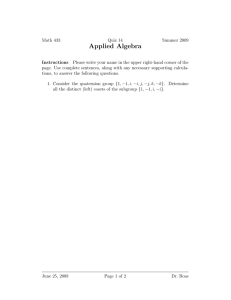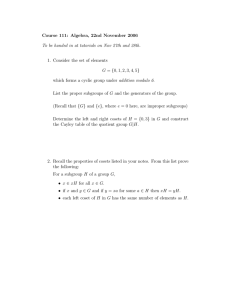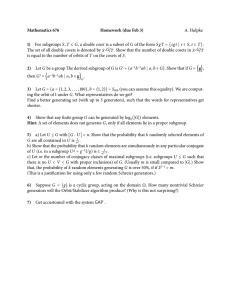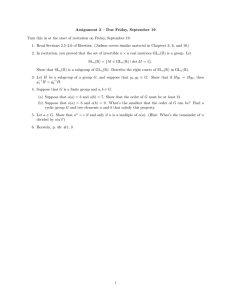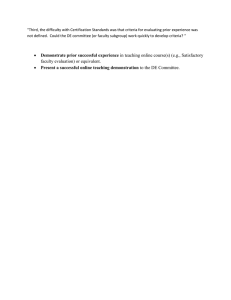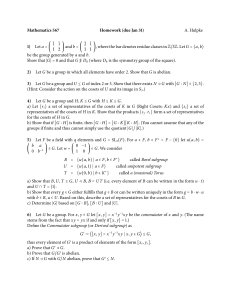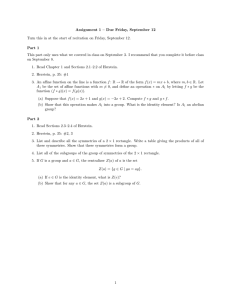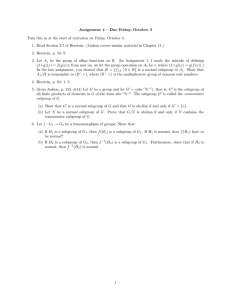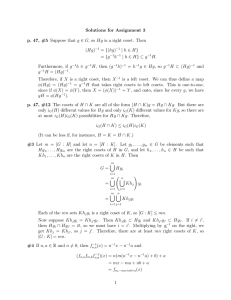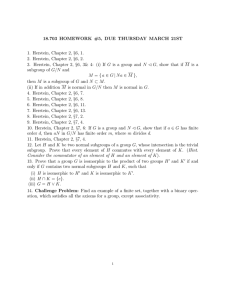Assignment 3 – Due Friday, September 26
advertisement
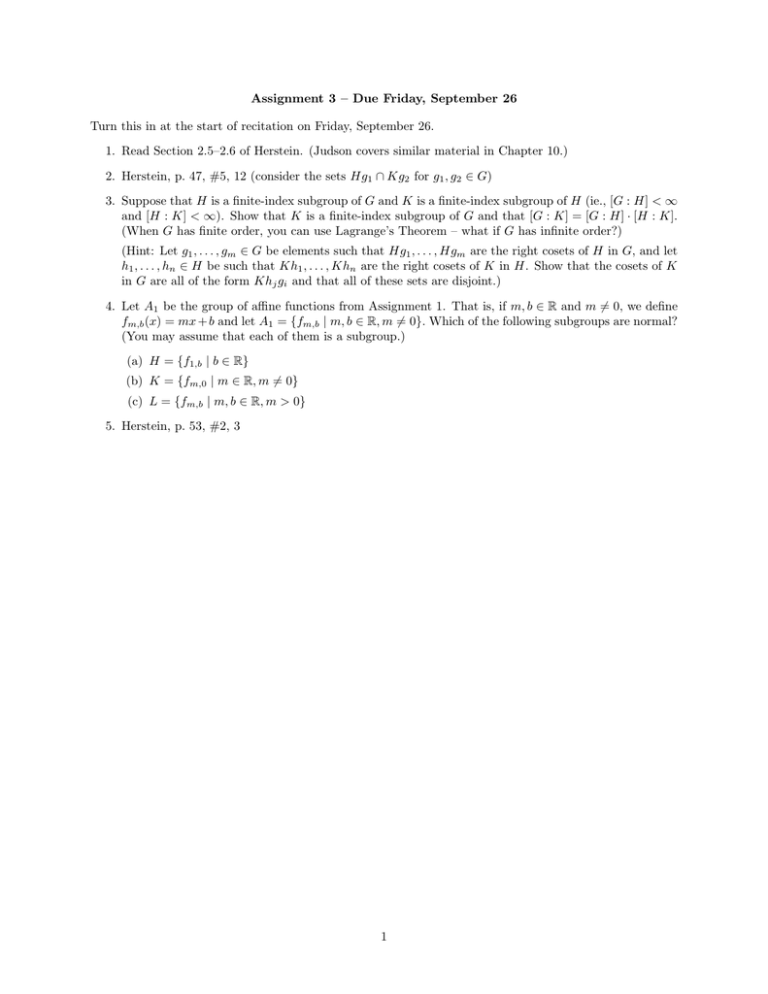
Assignment 3 – Due Friday, September 26
Turn this in at the start of recitation on Friday, September 26.
1. Read Section 2.5–2.6 of Herstein. (Judson covers similar material in Chapter 10.)
2. Herstein, p. 47, #5, 12 (consider the sets Hg1 ∩ Kg2 for g1 , g2 ∈ G)
3. Suppose that H is a finite-index subgroup of G and K is a finite-index subgroup of H (ie., [G : H] < ∞
and [H : K] < ∞). Show that K is a finite-index subgroup of G and that [G : K] = [G : H] · [H : K].
(When G has finite order, you can use Lagrange’s Theorem – what if G has infinite order?)
(Hint: Let g1 , . . . , gm ∈ G be elements such that Hg1 , . . . , Hgm are the right cosets of H in G, and let
h1 , . . . , hn ∈ H be such that Kh1 , . . . , Khn are the right cosets of K in H. Show that the cosets of K
in G are all of the form Khj gi and that all of these sets are disjoint.)
4. Let A1 be the group of affine functions from Assignment 1. That is, if m, b ∈ R and m 6= 0, we define
fm,b (x) = mx + b and let A1 = {fm,b | m, b ∈ R, m 6= 0}. Which of the following subgroups are normal?
(You may assume that each of them is a subgroup.)
(a) H = {f1,b | b ∈ R}
(b) K = {fm,0 | m ∈ R, m 6= 0}
(c) L = {fm,b | m, b ∈ R, m > 0}
5. Herstein, p. 53, #2, 3
1

